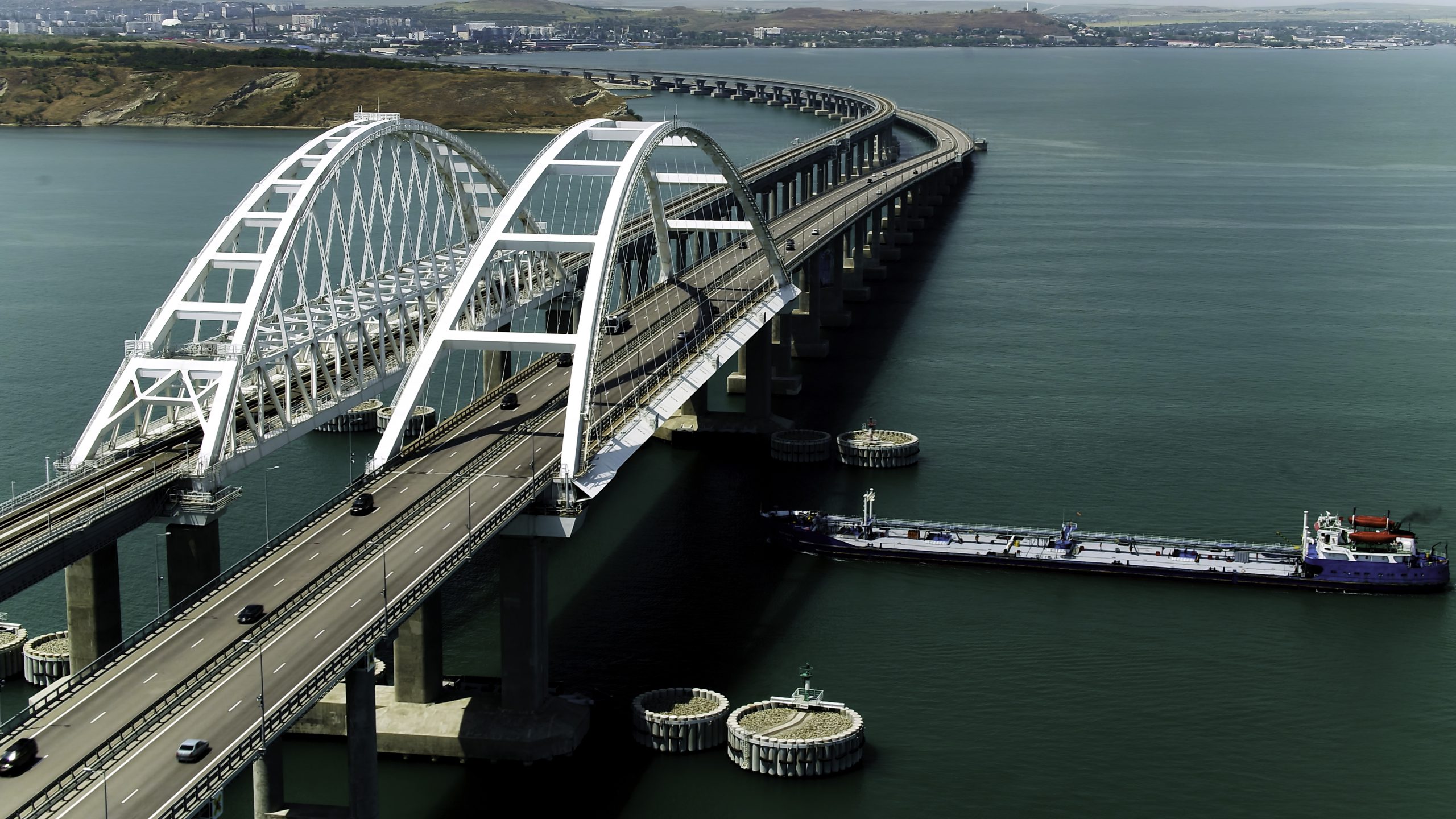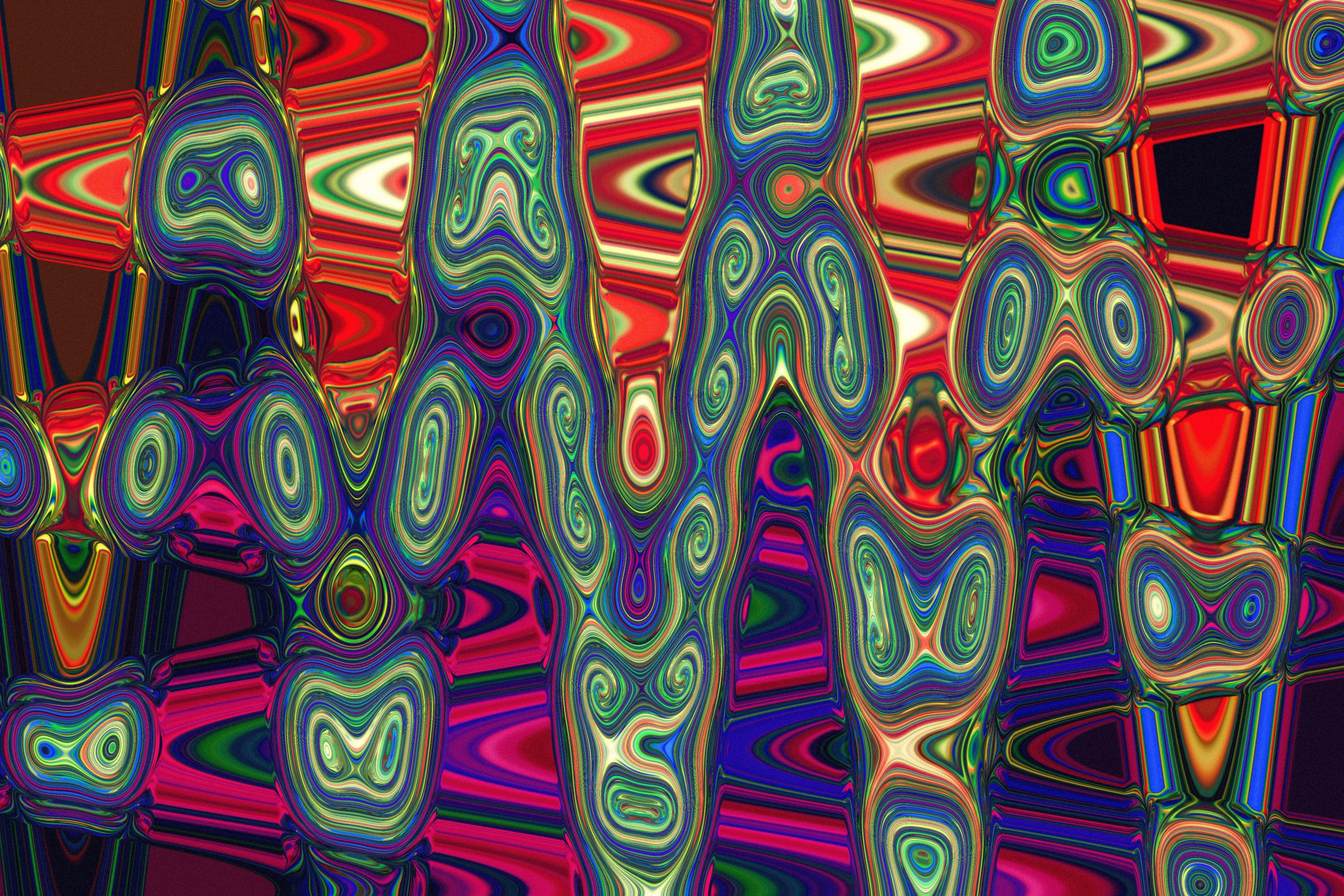
What happens when you take DIY auteurs and put them on a professional movie set? That was what happened when Toby Poser and John Adams traveled to Serbia to make “Hell Hole,” the latest film from half of the team known as the Adams Family.
For those who haven’t met them yet, the Adams are a literal family of four who have spent the last decade or so developing a unique, intuitive style of filmmaking that embraces serendipity and works with the natural surroundings of their home in upstate New York. Handling every aspect of the production themselves—one family member will hold the camera, another will run sound, while the rest perform in an improvised scene—they’ve made a handful of horror movies like “The Deeper You Dig,” “Where the Devil Roams,” and “Hellbender.” That last film was a breakout indie-horror hit, one that landed them a profile in The New York Times and a guest spot on “The Last Drive-In with Joe Bob Briggs.”
The latter appearance led to a deal with Shudder and production company Not the Funeral Home, which allowed Poser and Adams to make “Hell Hole” in the conventional style. It was their first movie with a standard screenplay, and their first shoot with a full crew of technicians—not to mention artificial lighting. Being true-blue horror filmmakers, the first thing Poser and Adams decided to do when given a (relatively) big budget was to amp up the gore by bringing in veteran effects artist Todd Masters. The result is a wild ride of a monster movie about two Americans (Poser and Adams) who unearth an ancient evil while working on a fracking site in Serbia.
We spoke with Poser and Adams about combining nuanced character work with outrageous splatter in this grand experiment, and what it was like to have someone else handling the details for a change.

The biggest difference with this movie is that you shot it in Serbia, rather than your usual locations in upstate New York. Did you tailor the story for that location?
Toby Poser: In some really cool ways. Once we knew we were going to shoot there, it became less of a small, intimate family story. We added more characters. And then, when we got there, we sat down with people who helped us translate [the script] so that it would make sense within the Serbian community. They weren’t perfect translations, more like something that’s funny there. For instance, there’s a line where [a character] says “he exploded a tomato” in English. In Serbian, it’s “he exploded like ajvar,” which is a red pepper paste [popular in the region]. It was fun playing with things like that.
You also made great use of abandoned Soviet-era industrial buildings. Were those part of the original plan?
John Adams: The original script was more family based. It was going to take place on an oil field in Canada, actually. Then when we got to Serbia, we changed it to a Russian mine. We’re Americans talking to Serbians and they’re talking to French people, and there’s Russians there, and everybody’s miscommunicating and everything’s wild and wooly. Toby wrote that into the script really well.
It was really smart the way you incorporated the Slovenian scientists not always being able to communicate with the American characters very articulately.
TP: It became kind of like an alienation soup, which plays in with the body horror, the social differences, obviously the international differences. So I think it really enriched the story that we got to shoot there.
How was the original more family based?
JA: We had a love story, actually, in the first run through of the script. We’re used to — obviously, we always make movies as a family. So we’re more used to the insularness and the love of a family. So there was more of a love story at the fracking camp. But when we got to [the set], we took most of the family stuff.
It’s still in there, a little bit.
TP: We still have a nephew and an aunt. We’ve often made stories about mothers and daughters, and [this time] I really wanted to make a story that’s about a woman who has no interest in motherhood whatsoever. It was really important to me that she’s like, “I love you. I’m your aunt, but I don’t want to be your mother. Don’t call me that.” And it worked in tandem with this particular story.
How about casting yourselves as the ugly Americans, and writing dialogue where you’re rude and crude? How was that?
JA: That part was easy. [Laughs]
Was it fun?
JA: Oh, of course. I mean, look, I love America. America is beautiful and America is ugly, and that’s what makes us Americans. And I think the Americans in it are both beautiful and very ugly.

I thought your character in particular was interesting, Toby, because she says she’s a hippie at heart, but she runs a fracking company.
TP: That wasn’t in the original [script] as much. We loved playing up the brutal cynicism of Americans. In America, we think fracking is violating the earth, so we go to another country and go drill on their property.
JA: The other thing that was important to us was there is no political statement about who’s right and who’s wrong. [Toby’s character] turned to fracking because windmills and solar panels weren’t working out for her.
It’s more character based.
JA: They’re human beings that are in a fix. Even the environmentalists make some pretty big mistakes.
And selfish decisions.
JA: So everybody’s in the same soup.
TP: The young scientist, she says, “this is what I do, but I find it interesting what you do.” She’s acknowledging that there are lots of angles to this conversation about how we get our energy.
I want to talk about conceptualizing the monster and the gore sequences in the film. Did you go in wanting to do something goopy and fun? There’s some gore in your other films, but it’s really played up here.
JA: This was our chance to make a monster movie. Working with Shudder and [production company] Not the Funeral Home let us do things that we would never be able to do as a family. And so when they approached us, we said, “Let’s make a monster movie because we cannot do that without outside help.” Then they approached Todd Masters, who’s a master at the most beautiful effects in the business.
I was going to ask how you got hooked up with him.
JA: Not The Funeral Home did all that. The producers hooked that up, and he’s the sweetest human being. And then we brought our effects guy [makeup artist Trey Lindsay] to be the bridge between us and Todd, to give it that Adams sauce. Monsters are great, but there can be difficulties in it because they’re not real organisms. You have to give them life. So [Trey] added stop-motion sequences and puppetry and made it all work.
The thing that stuck with me were the piles of gore. Like when your character dies, John, there’s a little puddle with an earring in it.
JA: That’s hilarious to us. We made this movie so we could all laugh together.
Were you influenced by other creature features? It made me think about “Alien” and “The Thing” with the coworker relationships and enclosed environment.
TP: We both love “The Thing” for sure. It was impossible not to pay homage to that.
JA: We also love “Creature from the Black Lagoon” and 1950s, early ‘60s monster movies. And they all have science. They all have the monster, and then a young female scientist. What we wanted to do was change that aspect of it a little.
How would you articulate the difference?
TP: I think for us, [the monster] is not sexual whatsoever. It really is just flipping the conversation about whose body’s going to get more attention. Because for decades, we’ve seen the story of women’s bodies being violated. And in this case, we thought, let’s put the focus on men. This creature has no interest in women. It’s functional.
JA: It’s fun to think of men’s bodies as the soil for fertility.
Yeah. Being colonized by these outside forces.
TP: Especially with everything that’s going on in the news in America. We didn’t want to bang anyone over the head with a massive hammer. We wanted this to be fun. But it was really important for me to have those nuggets of considerations about bodily autonomy. I’m not going to deny that.
Where and how do those themes emerge?
TP: We don’t usually work with full screenplays. We’re usually discovering our films while we’re making them. We take massive cues from whatever the universe is dropping into our laps, whether it’s a rainstorm or a dead deer in the woods. Our typical films are very organic, in the moment, living, breathing things.

Do you write outlines usually, or is it truly just going scene by scene and seeing what comes out?
TP: An outline, and maybe a template for a scene. In this case, we needed a full script.
Because you were working with other people?
TP: Yes. We were really thinking about that. It was a great exercise for us.
Normally you do everything yourselves. What was it like to give the technical aspects over to other people?
JA: That was a wild experience, but it was a wonderful time because it helped us grow as storytellers and filmmakers. Because what you find out when you’re working with the industry, I would say, is that there’s rules. The only way it works is if you follow the rules. And we’ve grown up making movies with no rules.
So now we see the rules, and we can apply any rules we like, but we can also go back to the way we make films with no rules and beside what we’re consciously keeping out or adding. For example, we’ve never used lights in our entire career, but [on “Hell Hole,”] day one, there’s lights and it’s like, “oh my God! Lights!”
I remember noticing the natural light in “The Deeper You Dig.”
TP: And the camera wasn’t in [John’s] hands, which was very new.
JA: And we usually paint with the camera. We use natural light. If it’s a cloudy day, it’s a cloudy day [in the film]. You figure out how to make it look great. This was a different experience. It was something that we never could have learned on our own.
TP: I was honestly a little overwhelmed at first, just because there were so many people. If you’re usually one to four people, and then you have 50 people on a set, it’s a different dynamic. I was a little shell shocked, but I’ll be honest, it only made me stronger. And I loved the education. I valued it. And there were things that were really fun, like, “oh, I don’t have to lug that into the woods?”
[Laughs] Yeah, someone else carried the heavy stuff.
TP: “I’m not allowed to touch it? No problem.” [Laughs] I’m not going to lie, I was happy about certain things. But it is a lesson when you learn how to collaborate with people, which I’m sure it is for people who’ve been doing it forever, too.
That brings up something interesting. Usually you’re shooting around your house, and you’re really intimate with that landscape. But this is a totally different landscape — literally another country, one that I assume you had never been to before?
JA: Correct. We did have the Russian mine as a background, so that was one thing that was very lucky.
Did you get to do any location scouting?
JA: No, the [production company] did that. We showed up and we’re like, “okay, this is what we have to work with. Let’s go.” We couldn’t go roam the woods and find the moss and the cliffs and all the streams that we know. We got to concentrate on the gore and these great Serbian actors and actresses. It became less about the [intuitive] way we work and more about finding what was beautiful about these people [we were working with].
TP: That was my favorite part, hands down.
Yeah? Why?
TP: It’s fun to work with people who are “yes” people. They were wonderful. A lot of them were theater actors, total professionals and fun and loving and lovable. I think that shines through. They were like, “oh, is that what you want? Okay, great. Let’s do it.”
JA: They didn’t do slapstick, even though the movie is outrageous. We told them, “don’t play it like an ‘80s movie. Play it honest and genuine, don’t nod and wink. Believe it.” And they believed it. It was really cool.
Toby, you have a background in acting — how did that influence the way that you have worked in the past, and also working with other actors for the first time?
TP: It’s funny. Even though theater is different from film, I take a lot of what I learned with me in directing and with other actors because it’s about listening and responding. It’s just about being in the moment. Even little technical things — I remember my teachers telling me something that I always use about how you choreograph who sits down at what time. And so I bring a lot of that with me. I love working with actors.
JA: It was fun watching you direct them. Toby sat with them and talked with them, she had a great rapport with them. I was more “go from here to there,” and Toby explained how to go from here to there. They loved her.
TP: Well, they loved working with you, too.
As you said before, your daughter Zelda [who co-starred in “Hellbender”] is away at college right now, but you did work with your daughter Lulu on this film. What was her contribution?
TP: She really got it in motion. We’re indebted to her, she wrote the first draft.
JA: It changed a lot. Her script was a real romance, it was very fun and sexy.
TP: Which is fun.
JA: It had sex scenes and things like that.
It’s so funny to go from romance in Canada to a gory monster movie in Serbia.
TP: It still had the tentacles, so imagine that. The tentacles were a source of humor.
Definitely a visual metaphor.




